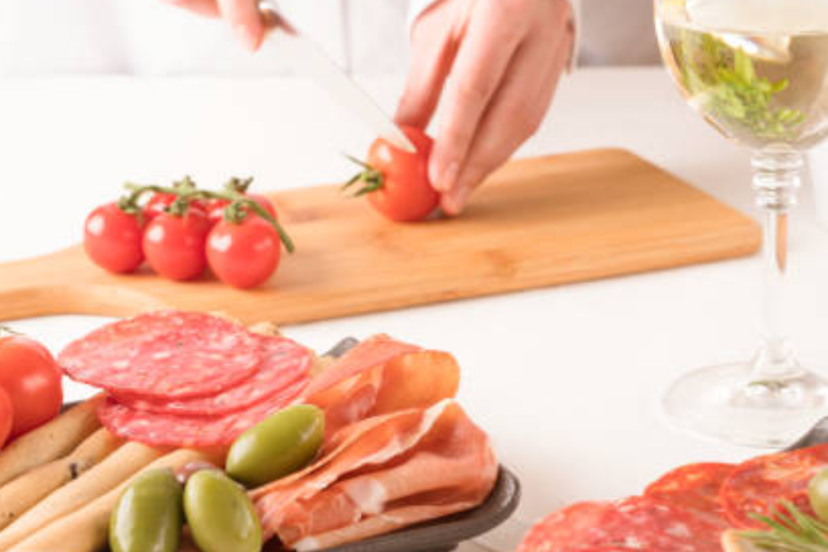A Beginner’s Guide to Charcuterie at Home
In the realm of gastronomy, few pursuits are as rewarding and artisanal as the craft of charcuterie the art of curing and preserving meats. While charcuterie boards have become a popular feature in restaurants and gatherings, venturing into the realm of home-cured meats can elevate your culinary skills and offer a unique, personalized touch to your dining experience. In this beginner’s guide, we’ll explore the fascinating world of charcuterie, unraveling the secrets of curing meats at home and creating your own masterpieces.
The Basics of Curing: Patience is a Virtue
- Curing is the process of preserving meat by using salt, sugar, and other flavorings. The key to successful home curing lies in understanding the balance of these ingredients and, most importantly, exercising patience. Unlike other cooking methods, curing is a slow and deliberate process that transforms raw meat into flavorful, preserved delicacies.
- Begin your journey into charcuterie by selecting a meat with good marbling, such as pork belly, duck breast, or beef. The cut should be fresh and of high quality to ensure a delicious end product. Once you’ve chosen your meat, it’s time to experiment with different curing methods and flavors.
Salt, Sugar, and Beyond: Crafting the Perfect Cure
- The foundation of any curing process is a well-balanced mixture of salt and sugar. These ingredients not only act as preservatives but also enhance the flavors of the meat. A basic cure may consist of kosher salt and brown sugar, but the world of charcuterie offers endless possibilities for creativity.
- Experiment with additional herbs and spices to create a unique flavor profile. For example, crushed garlic, black pepper, coriander, and juniper berries can add depth to your cure. Don’t be afraid to get creative and tailor your cure to match your culinary preferences.
Dry Curing vs. Wet Curing: Choosing Your Path
- Two primary methods of curing exist: dry curing and wet curing. Each method imparts its own character to the meat, allowing for diverse flavor profiles.
- Dry Curing: In this method, the meat is coated with the curing mixture and left to cure in a cool, controlled environment. Dry curing is often used for hams, bacon, and salamis. The process requires more time, but it intensifies the flavors and produces a concentrated, dry texture.
- Wet Curing: Also known as brining, wet curing involves submerging the meat in a liquid solution of salt, sugar, and additional flavorings. This method is quicker than dry curing and is suitable for cuts like corned beef or pastrami. Wet-cured meats tend to be moister and have a milder flavor compared to their dry-cured counterparts.
Mastering the Art of Smoking: Adding Complexity to Flavor
- While curing alone imparts incredible flavor, smoking takes charcuterie to another level. Smoking not only preserves the meat further but infuses it with a smoky aroma and flavor that is the hallmark of many classic cured meats.
- Consider investing in a smoker or improvising one using your grill. Experiment with different wood chips—such as applewood, hickory, or mesquite—to impart distinct smoky notes to your cured creations. Smoking is an art in itself, and mastering the balance of temperature and time will reward you with delectable, complex flavors.
Creating a Charcuterie Chamber: Aging for Excellence
- After the curing and smoking stages
- , some charcuterie enthusiasts take the extra step of aging their meats. Aging allows flavors to mature and intensify, resulting in a more complex and nuanced product. While not essential for all cured meats, it adds an extra layer of artistry for those seeking the pinnacle of charcuterie craftsmanship.
- Create a charcuterie chamber by repurposing an old refrigerator or investing in a dedicated curing chamber. Maintain a controlled environment with precise humidity and temperature levels to encourage the desired aging process. The length of aging varies depending on the type of meat and your personal preference, ranging from a few weeks to several months.
Beyond the Basics: Unique Charcuterie Creations
- Once you’ve mastered the fundamentals of home curing, it’s time to unleash your creativity. Consider crafting unique charcuterie creations that reflect your culinary personality. Infuse your cures with exotic spices, herbs, or even spirits like whiskey or wine for a distinctive touch.
- Experiment with different cuts of meat—duck prosciutto, lamb pancetta, or venison salami, for example. Play with textures by incorporating nuts, dried fruits, or seeds into your cures. The world of charcuterie is a canvas, and your imagination is the only limit.
Pairing Perfection: Elevating the Experience
- To complete your charcuterie journey, explore the art of pairing cured meats with complementary flavors. Consider the interplay between salty, savory meats and the contrasting sweetness of fruit preserves or honey. Add depth with artisanal cheeses, pickles, and crusty bread.
- Experiment with condiments like grainy mustard, balsamic reductions, or infused oils. The beauty of charcuterie lies not just in the cured meats themselves but in the symphony of flavors that emerge when paired thoughtfully with other elements.
Conclusion:
Embarking on the journey of home-cured meats and charcuterie is an exploration of flavors, textures, and time-honored techniques. As a beginner, embrace the process with patience and curiosity. Experiment with different cuts, cures, and smoking methods to discover your unique style within the art of charcuterie. Whether you’re crafting a simple bacon or a complex salami, the joy of creating your own cured meats at home is a culinary adventure that promises rich rewards and a newfound appreciation for the age-old craft of charcuterie.

